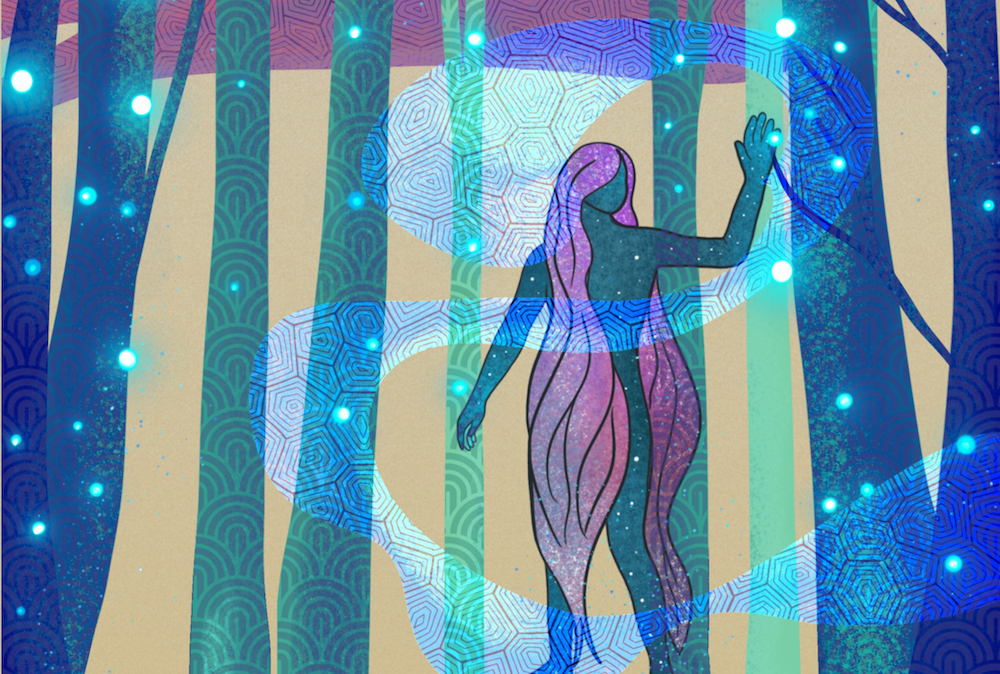By Ariana Monteiro
Brazilian cliché, Ariana Monteiro loves samba, soccer, and Carnaval. Her goal is to confuse and deconstruct certainties about emergent technologies, social justice, and human rights through future thinking methodologies. While also showcasing cultures, creativity, and bits of knowledge produced in the Global South.
From my wanderings through the world, I had the opportunity to learn how life, death, and the meaning of existence vary immensely across cultures, borders, and communities. Yet, this is something that I could only understand while enjoying the journey in between, without any preconceived destination or expectations. Above all, I came to this understanding by recognizing and honoring the gift of the stories I was told in the many encounters along the way. But before we proceed, please keep in mind that, as I have said, many stories explain the world differently. Mine is just another one.
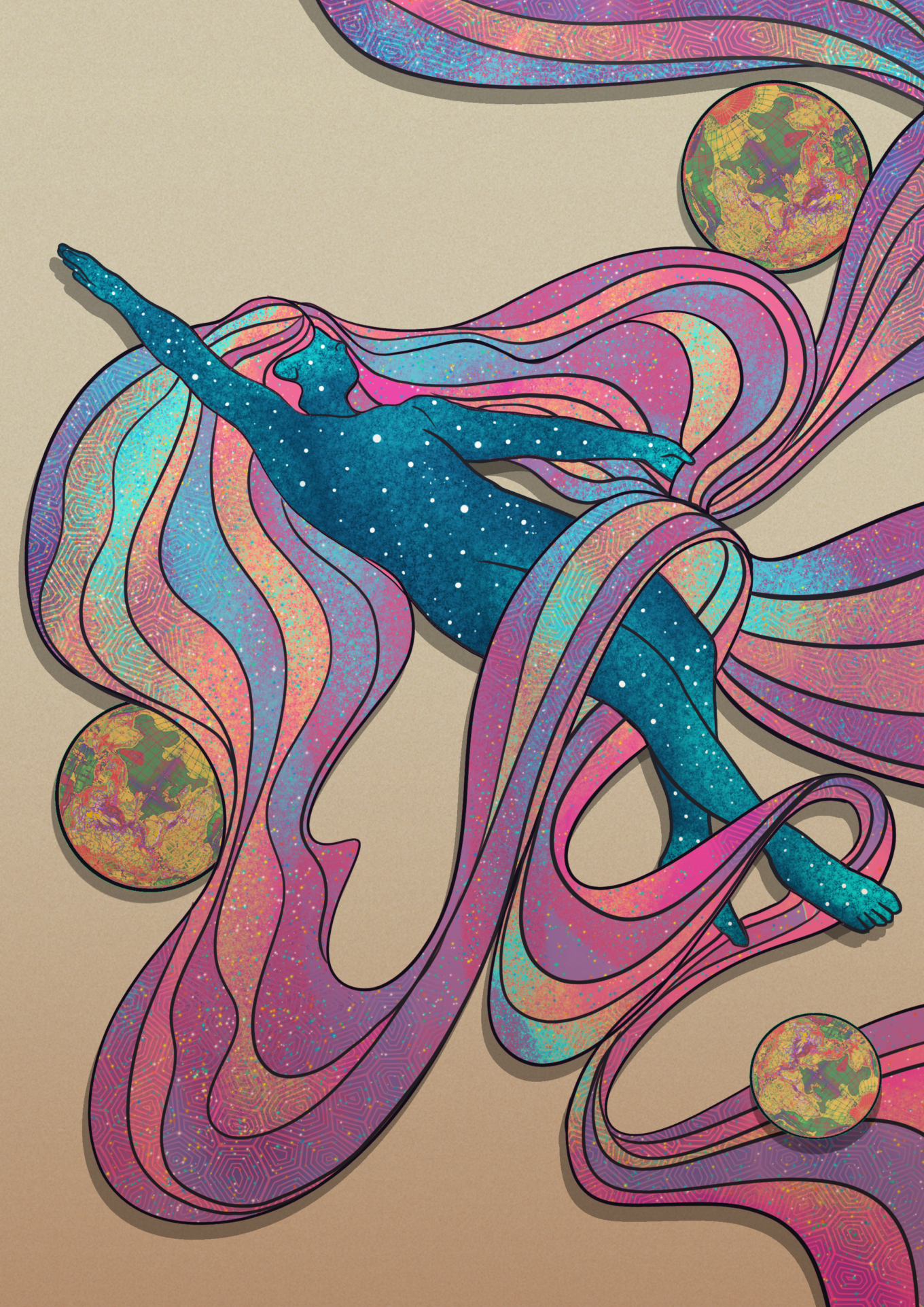
The perpetual world-ending state
The rhythm of modern life has made us believe that qualities such as abstractness, sensibility, and spontaneity have no place in scientific knowledge. In order to thrive amid crises and emergencies, we are obliged to set ourselves apart from abstractions and any thought process that diverges from the norm. One can either embody the norm or become the ‘Other’[1] – whose ways of knowing and being are seen as unfit for modern society. As a result, instead of embracing diverse thinking spectrums that might offer a more comfortable and enjoyable journey in life, we’re always searching for ways to survive apocalyptic scenarios and fantasies in which suffering is the standard rather than the exception. Let me explain.
At The End of the Cognitive Empire[2], Boaventura de Sousa Santos states that the world has been living in a permanent state of crisis. The problem that arises is that while an occasional crisis demands explanations and problem-solving, a permanent crisis explains and justifies the current state of affairs as being the only possible one, even if it means inflicting the most shameful and unjust forms of human suffering. Amid the scenario of permanent crisis, people are led to live and act in despair, but not to think and act critically upon the true root of systemic problems.
The science and the technologies sanctioned by western political thought have monopolized our social imaginary. It turns out that innovations have become constrained by metrics of economic profit as opposed to emancipatory practices for the common good. Somehow, the future has been co-opted by the state of despair that precedes disasters, and innovators from Silicon Valley seek ways to profit from this generalized anticipatory anxiety. For instance, think about the billionaire space race[3] led by Elon Musk.
For this select group of tech-billionaires, Earth is doomed. Consequently, humanity’s only chance of survival is to colonize the orbit of outer space. This is the perfect example of how empathy and awareness are left out of the development discourse. The choice of perpetuating a term such as colonization that echoes trauma and violence is never an innocent one. Actually, it’s a choice that exposes how the white savior complex[4] is being reimagined and updated to fit the contemporary world through a techno-colonialist mindset.
Now, more than ever, society is in the midst of an extremely urgent conversation about how we can benefit from better societal outcomes that truly tackle the contemporary turbulences of climate change, and the political, economic, and social crises in the context of globalization. Yet, to succeed, it’s imperative to stop any ongoing attempt to colonize the future through one size fits all solutions. Especially considering that we’re still in the present-day, struggling to solve the disastrous effects of colonization in history, such as: cultural alienation, diminished self-esteem, confusion regarding ethnic and racial identity, inequities, xenophobia, and discrimination. The problem is: how can we push for more desirable futures instead of merely replicating the inequalities of the past?
What I propose here is to challenge the horizon of possibilities of humanitarian work and the very basis of the eurocentric development discourse by promoting what Shiv Visvanathan calls Cognitive Justice[5]. Through this lens, knowledge co-exists in different forms and has its place in a larger ecology. Each form of knowledge embodies a form of life, and each form of life has its own wisdom, value, epistemology, and cosmology. Recognizing this diversity implies challenging the interpretation of humanitarian science as universal, exclusive, and able to comprehend all that can be understood, while assuming that no form is superior to another. It also implies that people are not objects to be managed through aid mechanisms.
Insofar as the need and relevance of humanitarian agencies’ work are undeniable, it is urgent to recognize some cultural deficits within aid organizations, such as disaster responses that are “not always informed by local realities.” Instead, operations often elaborate plans “about people experiencing risk, rather than by, with and for them”[6]. Is it the creation of the othering all over again through practice and discourse? Just think about how in the current global context of economic and political uncertainty, migrants and refugees are usually portrayed in the media[7]. On one side lies dominant insider groups such as governments, elite donors and aid organizations[8]. In opposition, them, the outsiders, strangers trying to cross the borders of the status quo[9].
In the following sections of this essay, aiming to avoid reproducing the pattern of uneven progress of the past[10], I invite you to dive into history. Navigate the beautiful plurality of the world. Imagine different development practices[11] collectively. And maybe, even doubt universalizing principles of our institutions[12]. Is humanitarian action really impartial, neutral, and independent? Why or why not? How might they do better and creatively reimagine their purpose? There are no easy solutions. Nonetheless, humanitarian organizations have the opportunity to experiment with innovative models of hybrid governance by respecting communities’ agency and right to self-determination [13]. While simultaneously addressing questions of stereotypical discourses and the creation of otherness in knowledge production, “this means that we do not need alternatives so much as we need an alternative thinking of alternatives.”[14]
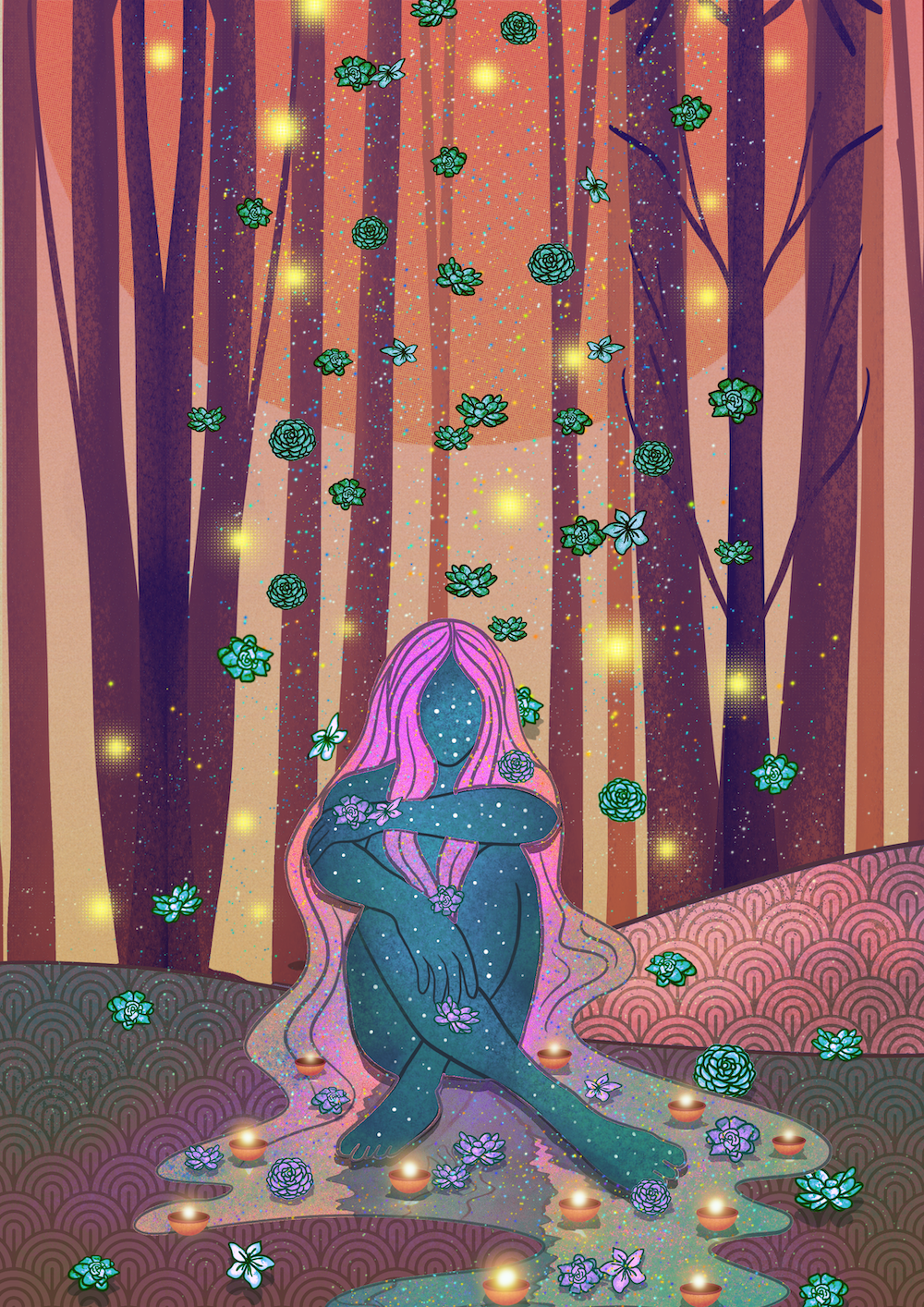
How many times has your world ended?
There is something simply magical about watching the sunset. During one of these moments, while admiring the sun sinking over the Lompoul Desert in Senegal, my friend Abdoulaye explained how Senegalese society has its root in animist traditions. Drawing in the sand, he said, “Senegal is part Muslim, part Christian, but we were all Animists prior to that,” finishing a circle in the sand. Nowadays, only a small percentage of Senegalese consider themselves animists, yet there are still countless animist practices[15], customs, and symbols (such as talismans for spiritual protection) in everyday life. And he continued “I like to see myself as a Baye Fall, it’s a way of life, a philosophy that comes from Senegal’s Sufi Islam[16]. We practice a different type of Islam, one that goes beyond the Sharia. We took the most important part of it, and we blend that with ancient animist traditions through acts of devotion for the welfare of our brothers and sisters, humans and non-humans alike.”
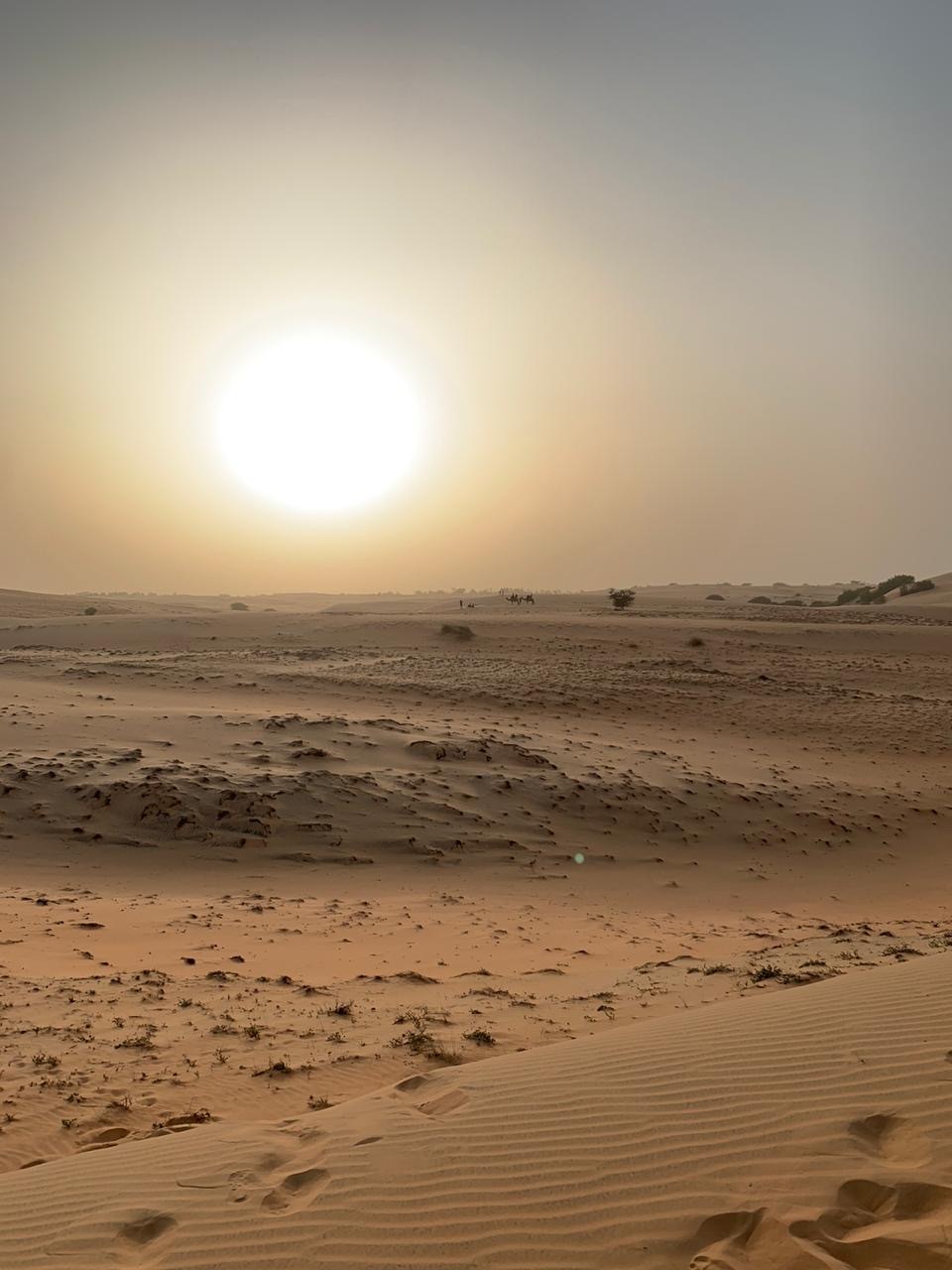
For Abdoulaye, all things have a soul, and ancestral gods, guides, and deities can be found anywhere, from our dreams to the soil of our lands. Thus, traditional animist healers[17] and holy leaders are vital figures to safeguard nature[18] and to maintain healthy communities. By the time the sun was almost setting, I told him how my great-grandmother was a traditional healer of her community too. I have many memories of visiting her and joining a line in her garden with other children to wait my turn to be treated by the touch of her plants[19] amid ritualist gestures and recited prayers. These women are known as Benzedeiras and hold an important place in their communities[20]. This form of healing respects a family tradition passed on from generation to generation, from mouth to memory. When she passed away my mother inherited the responsibility of continuing her grandmother’s legacy.
I was raised in a typical Brazilian household, which means a very religious one. Don’t get me wrong, it wasn’t the type of religiousness that demanded attention to sacred scriptures. Rather, it was based upon elders’ storytelling, botanical knowledge[21], superstitions, spells, blackmailing blessings, spiritual surgeries, chit-chat with the dead, and so on. Just like in many others, in my family home, it was possible to find huge crucifixes, Jesus imagery, monstrous figureheads, plant charms against evil, clay pots with coarse salt. On New Year’s Eve, families wear white clothes, chew seven pomegranate seeds at the stroke of midnight, and right after that, head straight to the beach, to jump over seven waves, whilst throwing flowers and floating candles into the sea as offerings to the deity Yemọjá[22].
Yemọjá is omnipresent in the islands and coastal areas of Cuba, Haiti, and Brazil, brought across the ocean by the Yoruba people[23] from western Africa who were kidnapped and enslaved during the European colonization of the Americas. On this side of the Atlantic, Europeans imposed their politics and religion on everyone else. For this reason, enforced cultural assimilation became paramount. Gradually enslaved communities, both Amerindian and African ethnic groups were not only familiar with the Catholic context, but deprived of their fundamental rights, they also became closer to each other due to the similarities of their own spiritual traditions. The interlocking oppression produced by slavery, colonialism, caused the formation of new belief systems such as Umbanda, Candomble, Santeria, and Voodoo, and the religious synthesis formed a path to survival, under the guise of Catholic figures.
It was during my conversation with Abdoulaye that I finally understood the religious particularity of my family and the reasons for its uniqueness. Just as his ancestors, my great-grandmother, and those who came before her bonded what made sense to them from the Roman Catholic sensibilities and Yoruba forms of religion to indigenous cosmologies. This created a tripartite expression that keeps their ancestral practices alive in the Americas. The hybridization of different forms of knowledge channeled through spirituality was vital to overcoming what Achile Mbembe[24] describes as the loss of rights over their bodies, the loss of political status, and above all the end of their worlds. Therefore, religion becomes a practice of resistance to the terrors of colonization and the lack of belonging to a new world imposed on them.
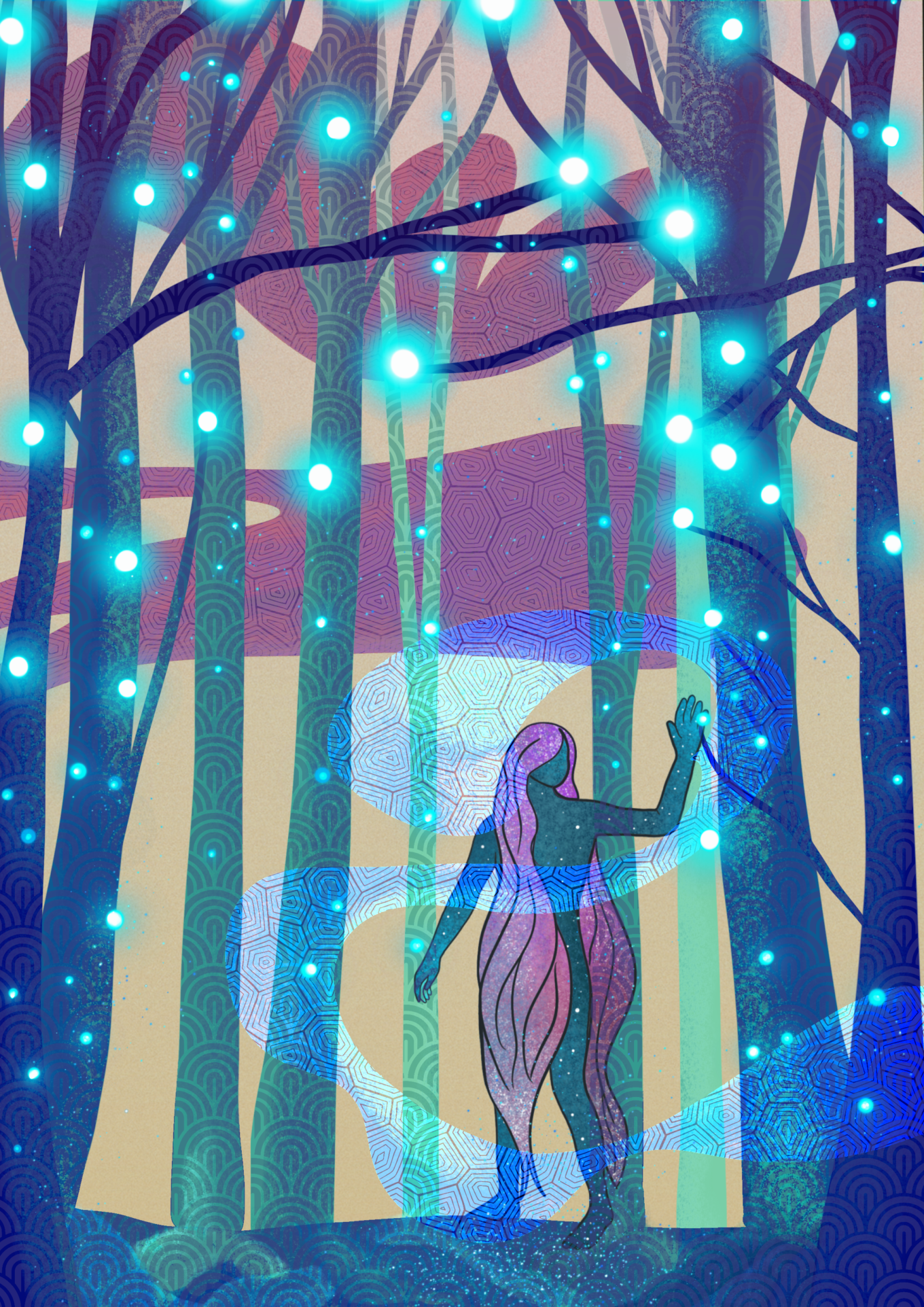
Death, renewal, and the afterlife
“World-endings have happened so many times before, marking the margins of the world like scars, but ‘when you feel the sky is getting too low, all you have to do is to push it back and breathe” Krenak,in Ideas to Postpone the End of the World.
For many communities across the Global South who suffered the ills of colonialism, existence became a form of death-in-life. Therefore, the complete death of the material or physical body also turned into an objective to be not only achieved but celebrated. This is the case in the yearly Festival of the Good Death at the Brazilian town of Cachoeira[25]. By 1878, the Cachoeira’s population was 7,000, from this total 2,000 were enslaved people. The festival was conceived by a sisterhood for female African slaves and former slaves as a celebration devoted to the Assumption of the Virgin Mary. Yet, just beneath the surface of the good death of Mary lies major social and political subtexts. Back then, the role of the confraternity was to offer a slavery-free death to the enslaved community of the town either by helping them escape, by financing the release from slavery, or paying for decent funerals for its members. Nowadays the Festival celebrates ancestrality and the coexistence of the hybridized beliefs of Brazilian culture. Over three days, the women of the sisterhood hold mass and processions enacting Mary’s death. It is a time of mourning as well as a celebration of Mary’s ascension into heaven, upon which she becomes Our Lady of Glory, in an open feast and festivities worshiping Orishás and Deities through ritual dancing and Rodas de Samba[26].
In order to survive, entire communities had to adapt their worldviews, renewing their beliefs and cosmologies to embody the historical events that crushed their worlds apart and universalized the European lifestyle. And they keep doing this every time their world bears the risk of ending again. According to the Yanomami people, the largest relatively isolated indigenous nation in South America distributed across both sides of the border between Brazil and Venezuela, the sky could fall any time – and it wouldn’t be the first time. In this society, the Shamans occupy a central role in maintaining the web of life’s balance on Earth and safeguarding the health and well-being of all things, thus it’s their duty to protect the sky (that we all share) from falling above us.
As stated before, one of the central aspects of western political thought is the instrumentalization of nature and even human relations in many situations leading to the separation between society-culture and nature as distinct entities. The anthropocentric view of nature has no place in Yanomami culture. Instead, humans are just spiritual beings embedded in the social relations of nature. Everything is interdependent and eco-dependent. Until the end of the 19th century, the Yanomami only had contact with other neighboring indigenous groups. In the 20th century, the white people arrived as ghosts coming from their dwelling place on the shores of the sky. They come in the form of missionaries, prospectors, and road workers bringing with them ideas of good and evil, violence, epidemics, and destruction amid loud cracks in the sky’s chest. The white people ignore the shamans’ work to protect the earth, one last time. They eat the forest, throw up merchandise and flee to the city. Nonetheless, the Yanomami shaman and Brazilian Academy of Sciences Fellow, Davi Kopenawa have warned us all with a prophecy “If you destroy the forest all the shamans die, the sky will break apart for good, white people will not be spared any more than we will. That is why, for us, what the white people call ‘future’ is to protect the sky from the xawara epidemic fumes to keep it healthy and strongly fastened above us.” [27]
Port-mortem encounters, UNHCR, and the state of emergency response
I have struggled with my cultural identity for as long as I can remember. It required a long journey to understand the destructive influence of collective trauma and face the supposed universal logic of modernity as an exception. It was only through the encounter with many other dead worlds, that I could see myself clearer and understand that my sense of belonging is ‘settled in the movement’ of death and renewal. In some weird way, UNHCR stands in the same position as I, settled between world-endings and beginnings, but constrained by the limits of the cartesian rationale, labeled worldviews, and prefabricated plans.
It is time now to change the content and the terms of the conversation. Up to this point and even after centuries of exploitation, in many communities spread across the world, the nature-culture cleavage does not make any sense. By transcending the cosmovision of the human as the center of all that exists, Amerindian cosmologies of Suma Qamaña, Swaraj in India, or even Ubuntu in South Africa are forms of knowledge as logical or rational as European thought but inspired by the ideas of commons, reciprocity, and solidarity. Humanitarian organizations must be attentive to the work being done by these populations and their organizations, to achieve sustainable economies, to learn, and to innovate.
In order to co-create better futures and extend the reach of aid, we must nurture awareness of the past and recognize the transformative capacity of deploying diverse thinking spectrums within action plans. And above all overcome the urge to innovate on behalf of others. Instead of being the saviors, humanitarian agencies can collaborate with civil society actors and act to provide communities with resources and means that allow them to be the agents of their own futures and adapt to systemic challenges on their terms.
Many lands are much more than soil; they can be intrinsically linked to identities, ways of living, values, culture, traditions, and histories. That is the case of the Nova Enseada community in Brazil, located amid the estuary and the sea. After years, the impact of human-related activities alongside the sea’s tidal force changed the coastal landscape and jeopardized this community’s existence by splitting their land in two and forcing a relocation. Due to the nature of the emergency that required an immediate response, fast solutions were found that failed to take the community’s connectedness with their land into consideration. The options were integration with a different society or relocation to the urban area.
Nonetheless, both options meant the elimination of their culture and were rejected by its “beneficiaries”. The community then began to seek ways to pursue a self-managed relocation model, focusing on finding a place with similar natural conditions and as close as possible to their original territory. During this process, they built their own network connected with different actors and organizations to defend their rights and support their cause. One of the encounters brought by these emergent connections came later with the South American Network for Environmental Migrations (RESAMA)[28]. This independent organization began to mobilize human and technological resources to grant visibility, support, and effective protection to communities at risk of displacement and/or trapped in vulnerable situations, by connecting the knowledge and expertise of affected communities to inform durable and culturally sensitive plans to cope with the effects of climate change[29].
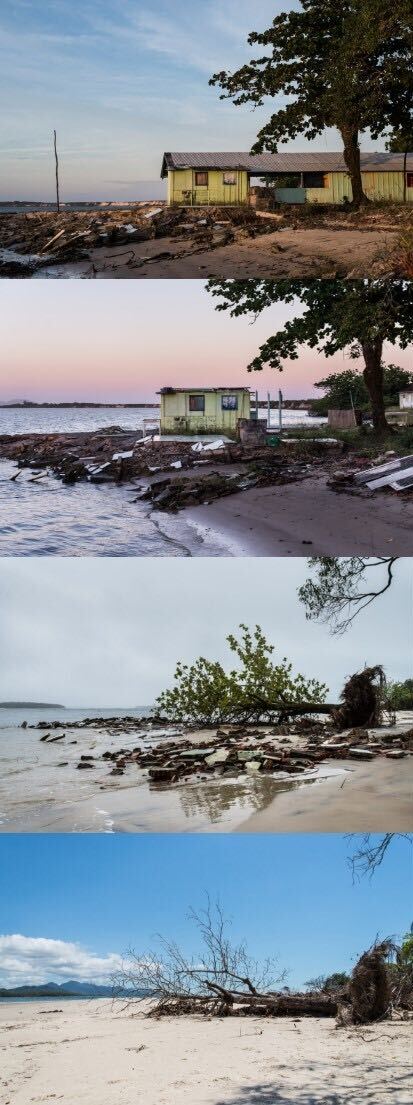
The Nova Enseada community case is surely a clear example of how the adoption of general aid blueprints is not suitable for the local context they are intended to address. But above all, it’s a case that calls for meaningful local participation in disaster studies. Humanitarian organizations must rely on affected communities’ knowledge to find contextually appropriate responses and co-create multidimensional plans at the local level. Otherwise, such organizations risk seeing their relevance being questioned in the future. This can happen mainly due to the maintenance of outdated structures and procedures that have for a while now been blamed for “disempowering local perspectives by framing local populations’ way of life as the vulnerable exotic other”[30].
How do we move forward from here? First, recognizing the flaws of the humanitarian system is not enough. Effective action to fix the system, its everyday habits, and ways of working is what matters most, and this can be achieved by addressing the cultural deficits between international organizations engaged in disaster risk reduction and communities at risk. One major avenue is stimulating awareness within the organization about the value of uncertainty to life’s renewal on Earth. The answer to the current challenges might be shifting the attention to marginalized narratives while seeking alternatives to promote cognitive justice[31].
What can we learn from others? How can we understand our various realities as part of bigger and interconnected ecology? How can organizations overcome pragmatism in aid and properly ground wellbeing at the very heart of operations? Curiosity has its own raison d’ȇtre when we are trying to imagine a renewed world. In the years to come, these questions might lead to the new critical concepts and skills to build more inclusive and resilient futures. It’s time to unlock humanitarian innovation as the bridge that connects worlds that, despite their differences, share the same sky and the same hope for better times.
References:
[1] Staszak, JF. in International Encyclopedia of Human Geography, 2018, https://www.unige.ch/sciences-societe/geo/files/3214/4464/7634/OtherOtherness.pdf
[2] Santos, B.S. in The End of the Cognitive Empire: The Coming of Age of Epistemologies of the South, 2018, https://www.dukeupress.edu/the-end-of-the-cognitive-empire
[3] Worrall, S.Three Billionaires Are Racing to Space. Who Will Win? in National Geographic, 2018, https://www.nationalgeographic.com/science/article/three-billionaires-are-racing-to-space–who-will-win-
[4] Kiunguyu, K. #NoWhiteSaviours: The white saviour complex in This is Africa, 2019, https://thisisafrica.me/politics-and-society/white-saviour-complex/
[5] Visvanathan, S. The search for cognitive justice, in Knowledge In Question: a symposium on interrogating knowledge and questioning science, 2009, https://www.india-seminar.com/2009/597/597_shiv_visvanathan.htm
[6] Gaillard et al., Power, Prestige & Forgotten Values: A Disaster Studies Manifesto, 2019, https://www.ipetitions.com/petition/power-prestige-forgotten-values-a-disaster
[7] Resende, F; Agra, F. Refuge and colonization of the future: borders built by words, in Comunicação e sociedade 38, 2020, http://journals.openedition.org/cs/4260
[8] Kramer, M. Are the Elite Hijacking Social Change? in Stanford Social Innovation Review, 2018, https://ssir.org/books/reviews/entry/are_the_elite_hijacking_social_change
[9] Baker, T. The othering of migrants has negative consequences for society at large in London School of Economics and Political Science, 2020, https://blogs.lse.ac.uk/brexit/2020/08/19/the-othering-of-migrants-has-negative-consequences-for-society-at-large/
[10] Crisp, J., ‘Primitive people’: the untold story of UNHCR’s historical engagement with Rohingya refugees, in The Humanitarian Practice Network, 2018, https://odihpn.org/magazine/primitive-people-the-untold-story-of-unhcrs-historical-engagement-with-rohingya-refugees/
[11] The Doing Development Differently manifesto in ODI, 2021, https://odi.org/en/about/our-work/doing-development-differently/
[12] Humanitarian principles, UNHCR, https://emergency.unhcr.org/entry/44765/humanitarian-principles
[13] Quintero, J. Residual Colonialism In The 21St Century in United Nations University, 2012, https://unu.edu/publications/articles/residual-colonialism-in-the-21st-century.html
[14] Santos, B.S. in The End of the Cognitive Empire: The Coming of Age of Epistemologies of the South, 2018, https://www.dukeupress.edu/the-end-of-the-cognitive-empire
[15] Rosen, P. Out of this World: An Ethnographic Study of Mystics, Spirits, and Animist Practices in Senegal, Independent Study Project (ISP), 2013, https://digitalcollections.sit.edu/cgi/viewcontent.cgi?article=2536&context=isp_collection
[16] Bobst, C. The Sufi Brotherhoods of Senegal in Photographic Museum of Humanity, 2014, https://phmuseum.com/CBobst/story/the-sufi-brotherhoods-of-senegal-599c33f73f
[17] McKinley, C., Treating the Spirit: An Ethnographic Portrait of Senegalese Animist Mental Health Practices and Practitioners in Dakar and the Surrounding Area, Independent Study Project (ISP) Collection, 2012 https://digitalcollections.sit.edu/isp_collection/1403
[18] Kimmerle, H. The world of spirits and the respect for nature: towards a new appreciation of animism in The Journal for Transdisciplinary Research in Southern Africa, 2016, https://td-sa.net/index.php/td/article/view/277
[19] Benzedeira and baby in Youtube, 2018, https://youtu.be/yFjsUYq1dsg
[20] Assunção, Luiza Maria de, Querino, Rosimár Alves, & Rodrigues, Leiner Resende. Healing blessing in territories of the Family Health Strategy: perceptions of workers, users and healers, in Saúde em Debate, 44(126), 762-773. Epub November 16, 2020, https://doi.org/10.1590/0103-1104202012613
[21]Pagnocca, T.S., Zank, S. & Hanazaki, N. “The plants have axé”: investigating the use of plants in Afro-Brazilian religions of Santa Catarina Island. in J Ethnobiology Ethnomedicine 16, 2020, https://doi.org/10.1186/s13002-020-00372-6
[22] film by Vincent Moon & Priscilla Telmon, Petites Planètes produced by Fernanda Abreu, Feever Filmes, FESTA DE IEMANJÁ in Híbridos, the Spirits of Brazil, 2019, https://youtu.be/Kzj7vOxxtRU
[23] Yoruba people in Wikipedia, https://en.wikipedia.org/wiki/Yoruba_people
[24] Mbembe, A. , Necropolitics in Public Culture, Volume 15, Number 1, Winter 2003, https://edisciplinas.usp.br/pluginfile.php/2695873/mod_resource/content/1/Mbembe_Necropolitics.pdf
[25]Chatfield-Taylor, J. Dance of Life To Honor Death, in The New York Times, 2004, https://www.nytimes.com/2004/02/22/travel/dance-of-life-to-honor-death.html
[26] Bruney, G.; Nathan, T., Breaking the Circlre: Women in Samba in WEPresent, 2019 https://wepresent.wetransfer.com/story/breaking-the-circle-tobias-nathan/
[27] Kopenawa & Albert, The Falling Sky: Words of a Yanomami Shaman, 2013, https://letrasindomitas.files.wordpress.com/2018/05/2013-davi-kopenawa-bruce-albert-alison-dundy-the-falling-sky_-words-of-a-yanomami-shaman-the-belknap-press-of-harvard-university-press.pdf
[28] To know more about their work access https://resama.net/
[29] Giovanna Gini, Tatiana Mendonça Cardoso and Erika Pires Ramos, When the two seas met: preventive and self-managed relocation of the Nova Enseada community in Brazil in Forced Migration Review, 2020, https://www.fmreview.org/issue64/gini-mendoncacardoso-piresramos
[30] van Riet, G. The Nature–Culture Distinction in Disaster Studies: The Recent Petition for Reform as an Opportunity for New Thinking?. Int J Disaster Risk Sci, 2021, https://doi.org/10.1007/s13753-021-00329-7
[31] Jayawickrama, J., Humanitarian aid system is a continuation of the colonial project, in AlJazeera, 2018, https://www.aljazeera.com/opinions/2018/2/24/humanitarian-aid-system-is-a-continuation-of-the-colonial-project
This page is part of UNHCR’s Project Unsung collection and portfolio. Project Unsung is a speculative storytelling project that brings together creative collaborators from around the world to help reimagine the humanitarian sector. To discover move about the initiative and other contributions in the collection, you can go to the project website here.

